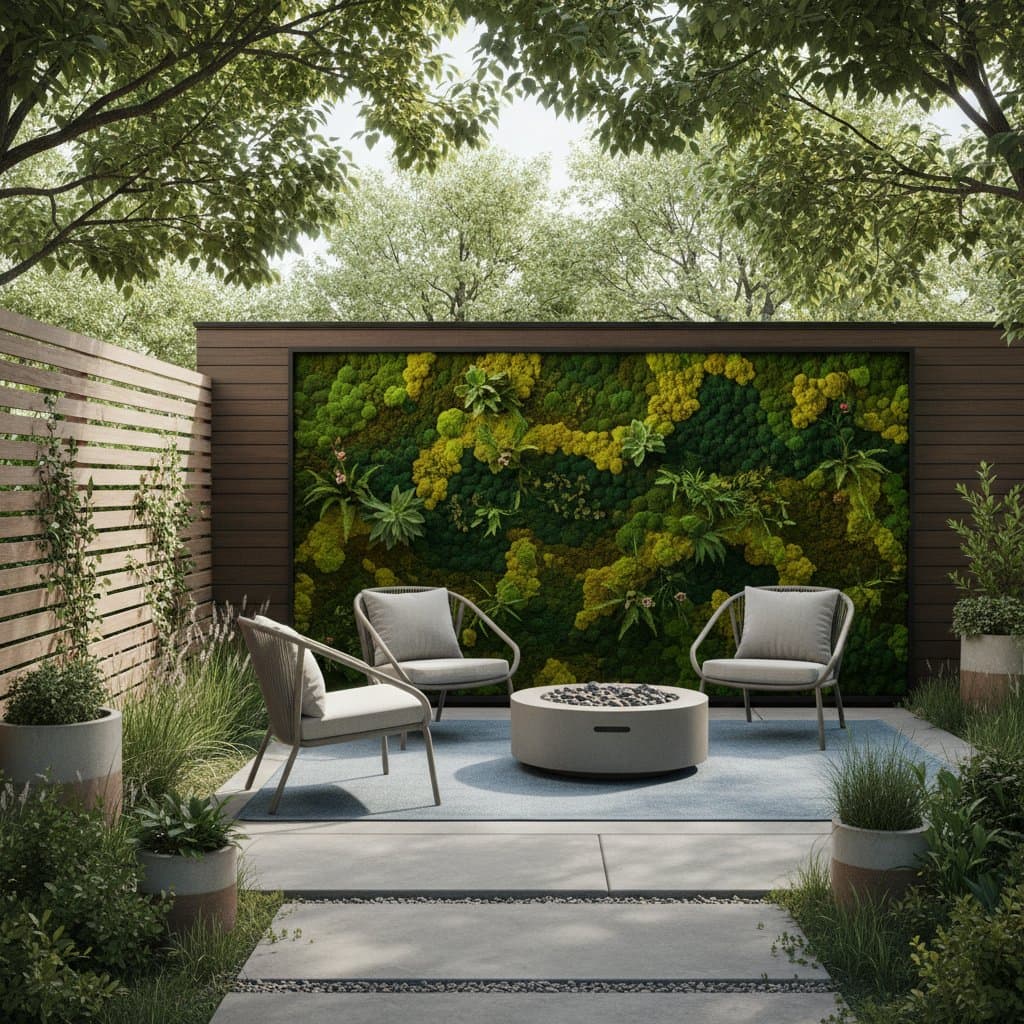Approximate Expense: $200 to $800, depending on material choices and plant types
Moss walls and living fences fit various property sizes and budgets. A small moss wall panel by the entrance costs about the same as a few bags of mulch. A full living fence for privacy costs more but remains less expensive than wood or composite options when built carefully.
Essential Materials and Tools
Moss Wall Components
- Sturdy backing, such as treated plywood, cement board, or metal mesh
- Moss varieties like sheet moss for smooth surfaces, cushion moss for added texture, or fern moss for subtle details
- Attachment tools including a staple gun or wire ties
- Watering methods such as a spray bottle or automated misting system
- Fertilizer designed for shade-tolerant plants
- Optional wooden framing for a finished edge
Living Fence Components
- Support posts made from wood or metal
- Galvanized wire or lattice panels for guidance
- Climbing plants like honeysuckle for scent, jasmine for flowers, or ivy for quick coverage
- Hedging options such as boxwood for a formal look or privet for thick growth
- Irrigation tools including drip tubing or soaker hoses
- Soil enhancers like mulch and compost
Choose long-lasting materials to avoid problems later. Select rot-resistant wood and galvanized hardware to extend the lifespan of your project.
Detailed Installation Guide
1. Prepare the Site
Remove existing plants, weeds, and debris from the area to establish a clear base. Level the ground and improve drainage in spots where water pools, since moss prefers moist conditions but can develop rot or mold in standing water. For living fences, dig post holes 2 feet deep and secure posts with gravel or concrete for firm support.
2. Construct the Framework
Attach the backing to a strong frame or wall for the moss setup. Metal mesh works well because its grid allows moss to grip securely. For the living fence, stretch galvanized wire across posts every 12 to 18 inches, keeping it taut to hold plant weight and allow air flow to prevent diseases.
3. Condition the Moss or Plants
Soak moss pieces in water for 15 to 20 minutes before applying them, which helps them stick and reduces transplant shock. For fence plants, water the root balls well and trim damaged parts to encourage strong rooting. Mix compost into planting holes at a 1:2 ratio with native soil to provide nutrients from the start.
4. Execute the Placement
Press soaked moss firmly onto the backing and fasten it with staples or wire every 4 to 6 inches. Overlap sections by 1 to 2 inches for full coverage, then mist thoroughly to help it adhere. Plant vines or shrubs at the base of the fence, spacing them 18 to 24 inches apart based on their mature size, and tie young shoots loosely to the wires.
5. Establish Watering Routine
Mist moss once or twice daily for the first two to three weeks to keep it moist, adjusting for local humidity levels. Once established, moss needs watering only occasionally but benefits from regular misting. Water living fences consistently until roots take hold, then switch to deep watering once or twice a week to promote deep growth.
6. Refine and Guide Growth
Trim overgrown areas regularly to maintain shape and even density. Clear debris from moss walls and rinse them every three months to remove dust. Guide vines along the supports and prune seasonally to fill thin spots, keeping the fence lush during peak growth.
Ensuring Durability and Excellence
Precise work separates short-lived projects from those that last. Ensure moss makes even contact with the backing during installation; loose spots can dry out and fall away. For fences, check and tighten wires periodically as plants add weight, and realign posts if needed.
Inspect every two weeks during the first growing season for issues like uneven moisture, pests, or fungi. Fix problems quickly by replacing affected moss patches or vine sections to prevent spread. In cold climates, cover moss walls with breathable burlap in winter and add 3 to 4 inches of mulch around fence roots for insulation, helping the installation endure for years.
Optimizing Costs and Standards
Achieve professional quality on a budget. Start small and buy materials from local suppliers to cut expenses. Collect moss from shaded areas in your yard if possible, and use scrap wood or recycled mesh for backings.
Invest in key items like durable irrigation fittings and rust-proof hardware to avoid repairs. Cheap options, such as untreated wire or wood, save money initially but lead to higher costs later. If funds are limited, focus on one area and expand gradually, allowing the moss and plants to blend naturally over time.
Ecological and Visual Advantages
Moss walls and living fences offer more than beauty; they improve the environment. They filter air by capturing pollutants and reduce urban heat by absorbing light instead of reflecting it. These features draw birds and pollinators, connecting your yard to the local ecosystem and aiding wildlife.
Visually, they add natural textures that soften hard lines and create interest. A moss panel near a walkway brings calm and touchable appeal. A green living fence defines spaces gently, avoiding the harsh look of solid barriers. This blend of nature and craftsmanship gives your home a distinctive character.
Advanced Strategies for Lasting Impact
Choose local moss and plant species for better adaptation and less maintenance. Install automated misting or drip systems for consistent watering when you travel, as reliable moisture sustains health. Place moss walls in shade, using only sun-tolerant varieties in brighter spots.
Apply compost or slow-release fertilizer twice a year to keep living fences strong. Protect new installations from pets and children until they stabilize, avoiding damage to anchors.





